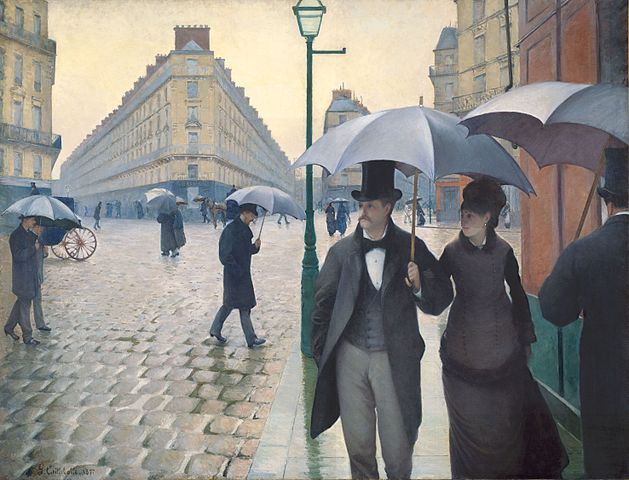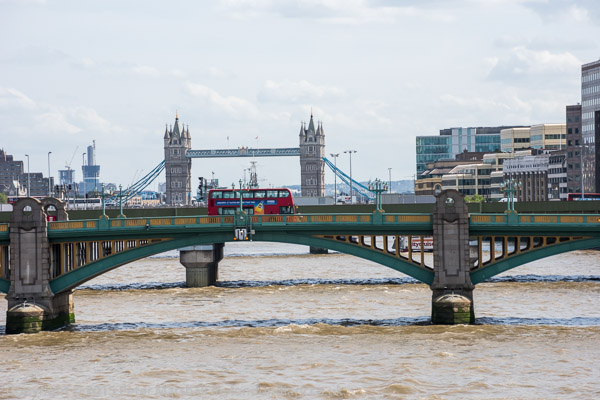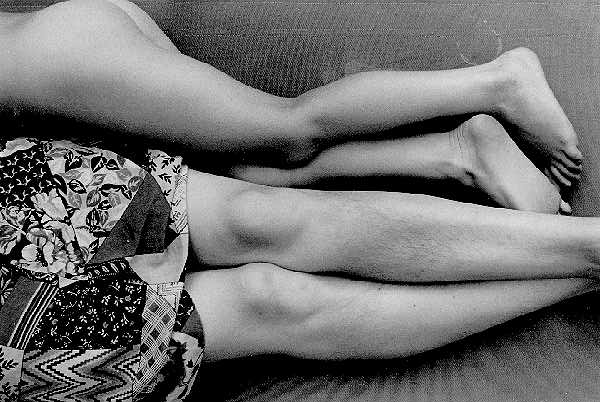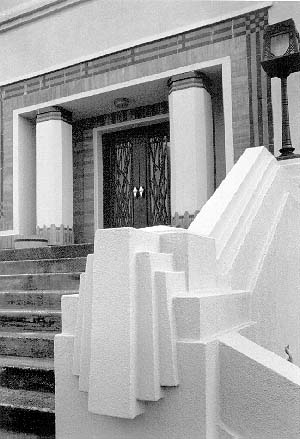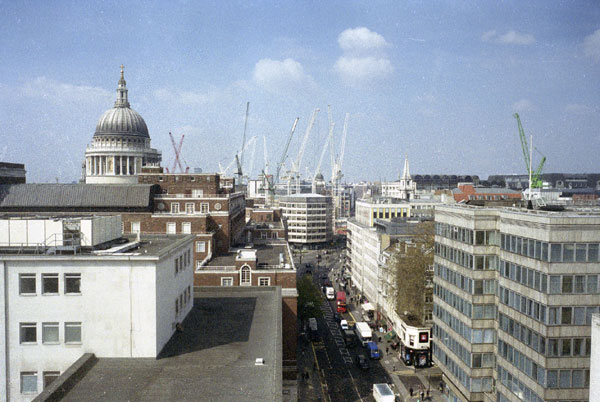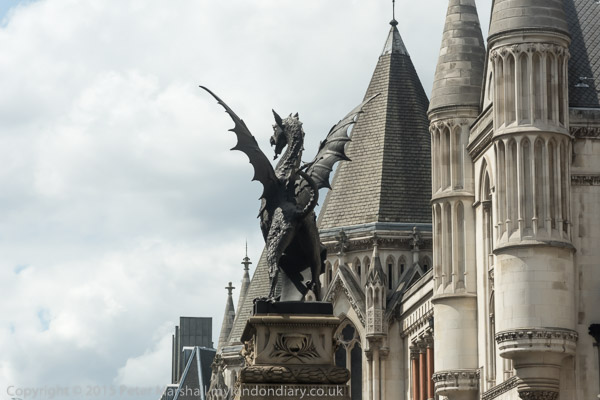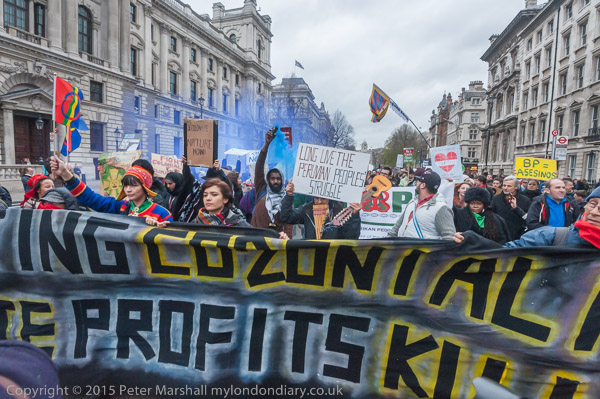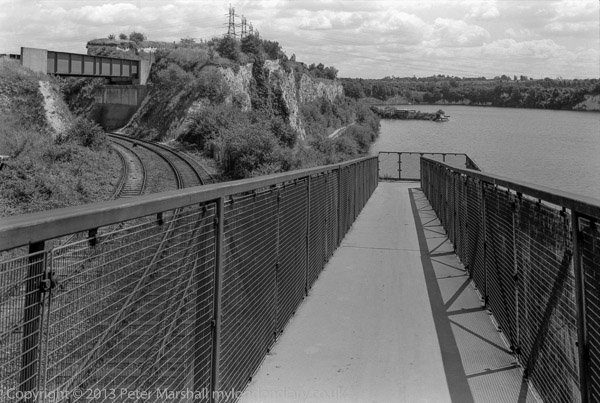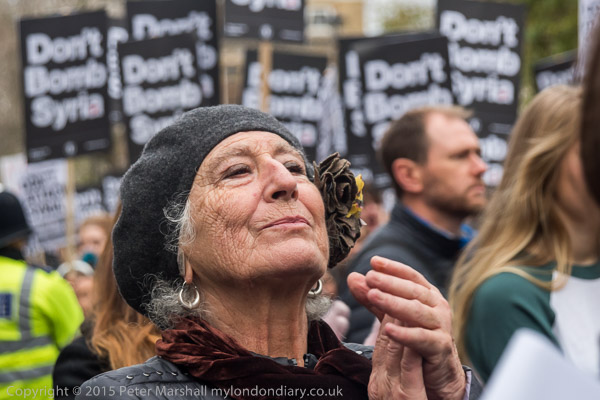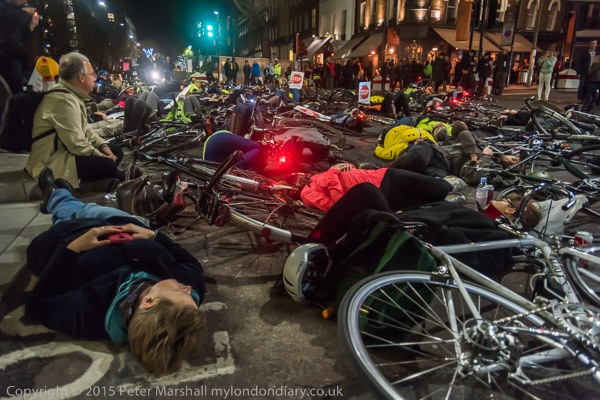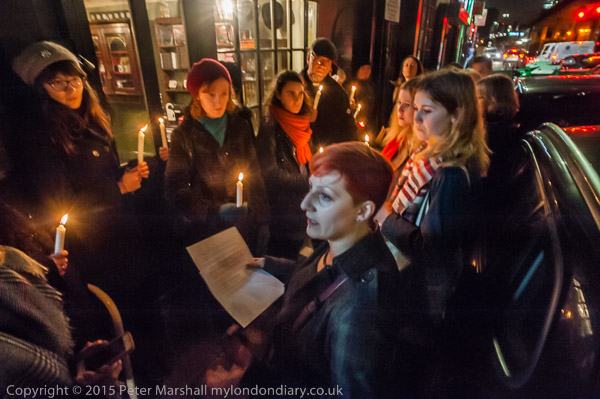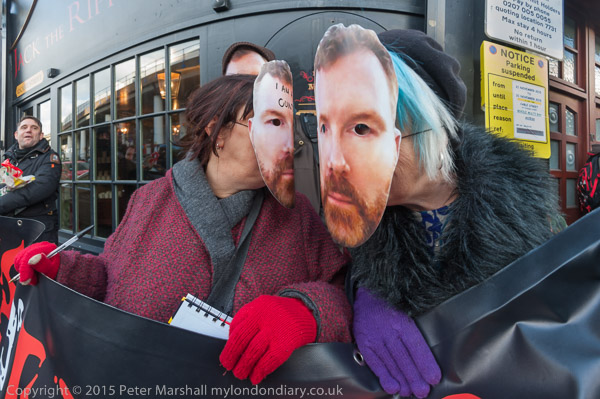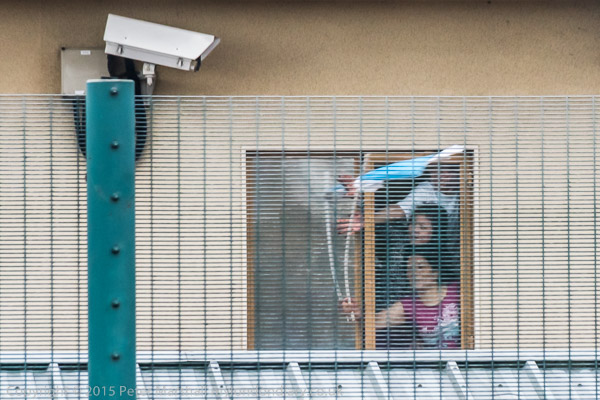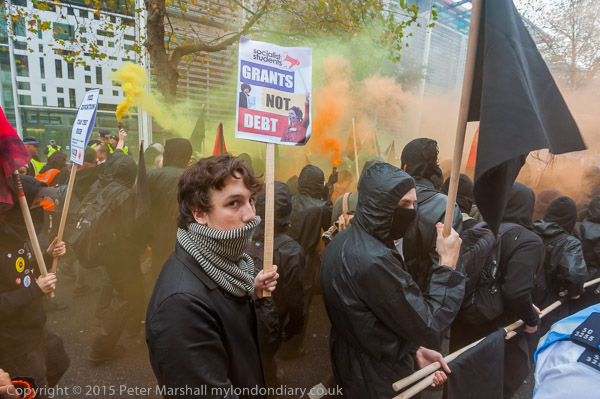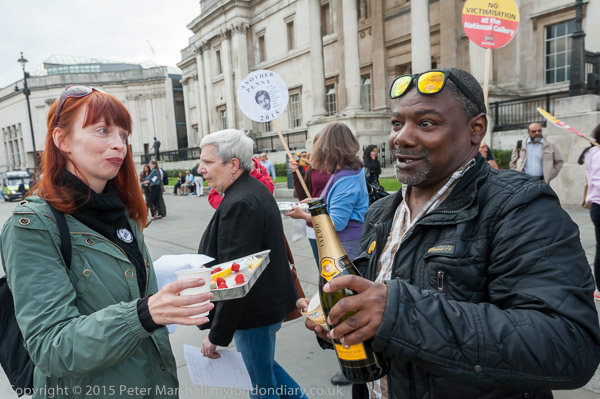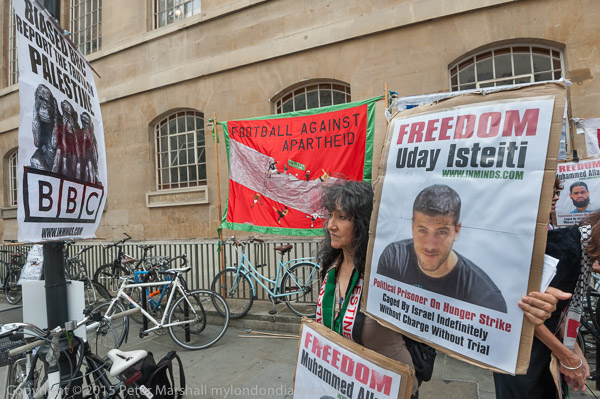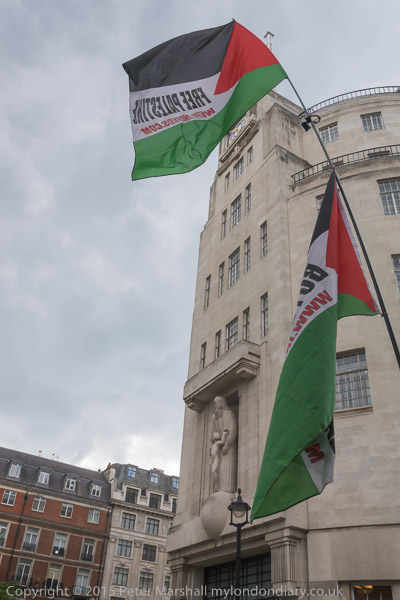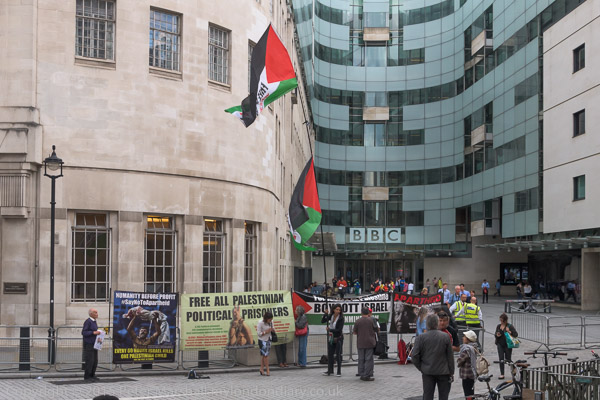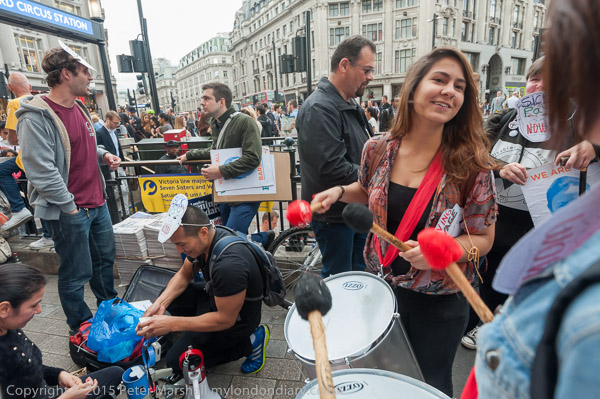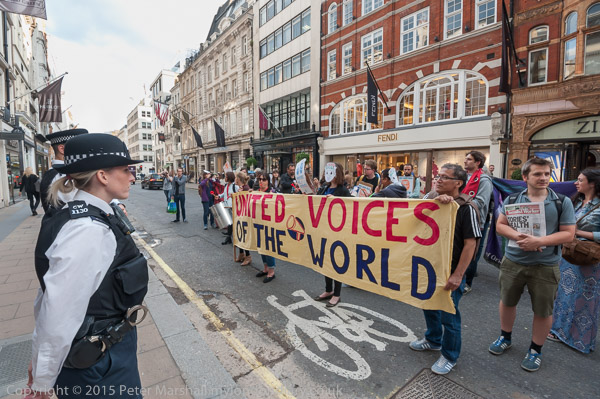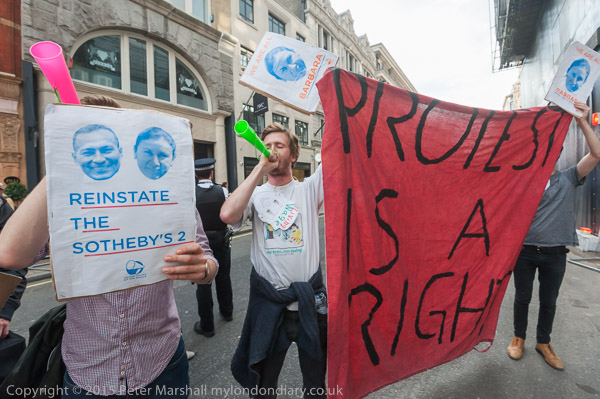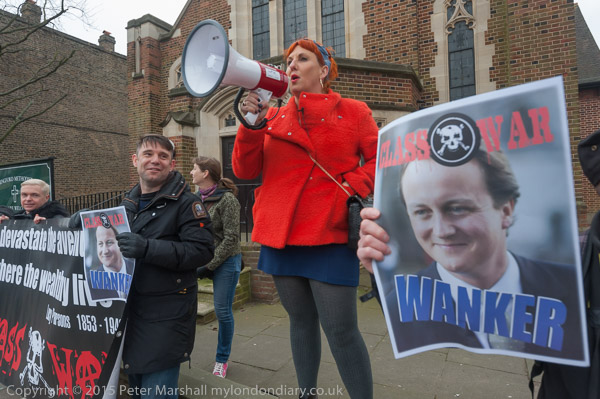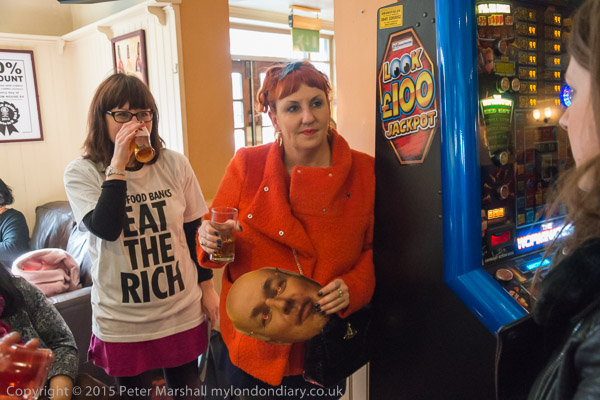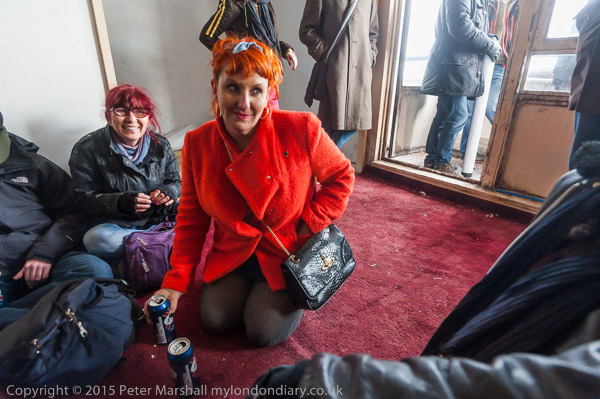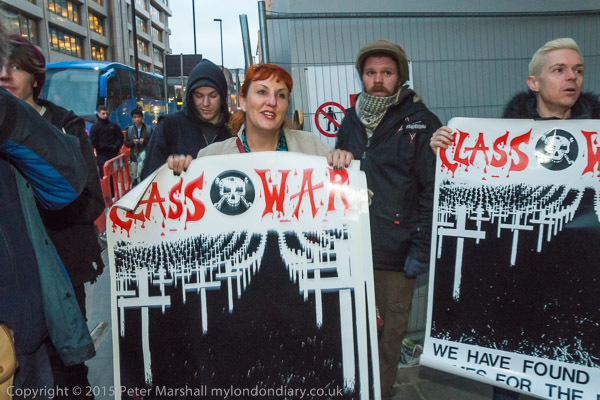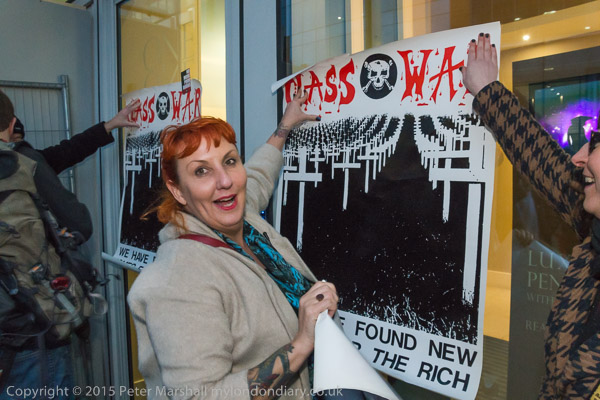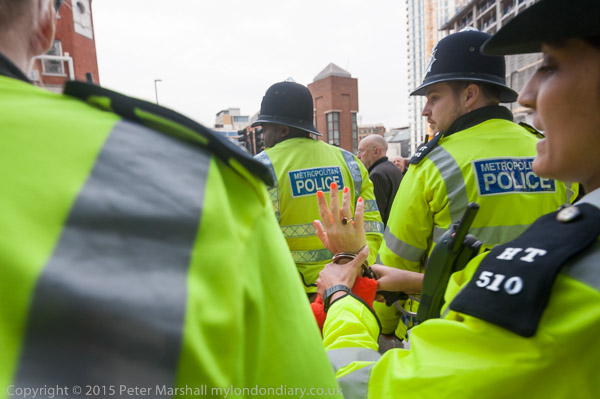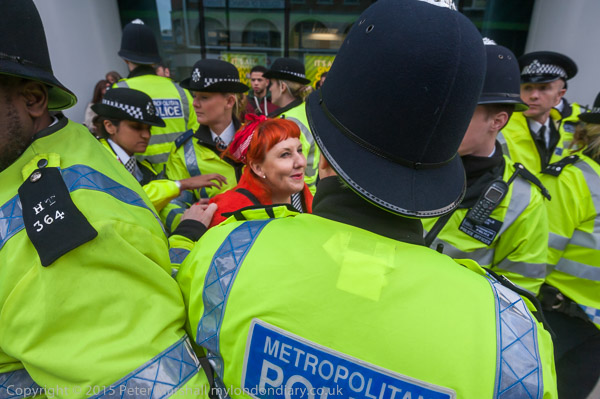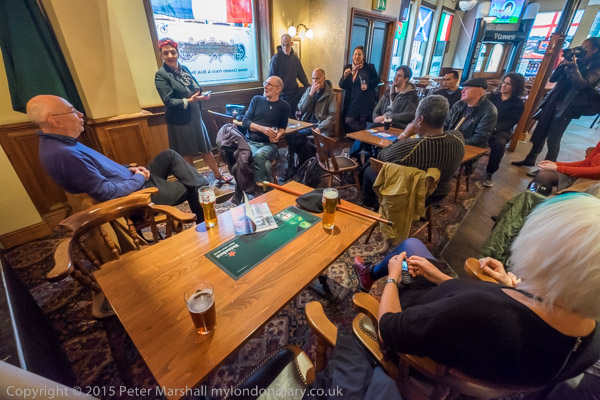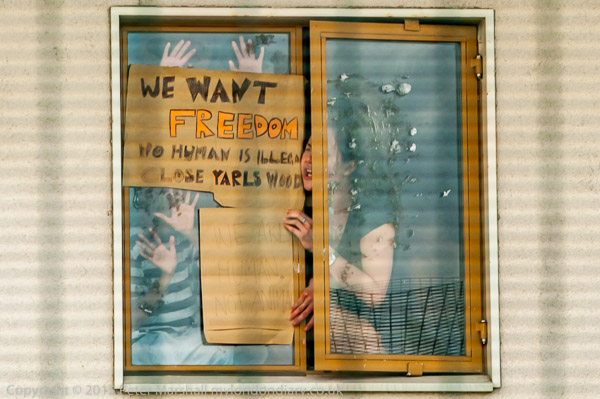
It was a warm sunny day in August when I set out for my first visit to Yarl’s Wood, though I’ve previously attended protests in London calling for its closure at least since 2008. But despite all its problems and many protesters, it remains, one of a number of similar blots of national shame where we lock up and mistreat people who have come to our country for asylum, often fleeing violence and torture. Yarl’s Wood differs from others such as Harmondsworth and Colnbrook closer to where I live in that the great majority of those imprisoned there are women and children.
The continuing protests, along with court actions which have also been a part of the campaign have had some success, but Yarl’s Wood and the other prisons remain. The Home Office have been forced to make some changes, and certainly have been prevented many from deportation back to persecution and possible death.
As many former inmates attest at the protests outside, they are a great morale booster for those still incarcerated who otherwise often feel that they have been locked away and forgotten, with no one caring. It is worse than prison they say, because at least when you are sentenced you know the length of your sentence. When you are taken to Yarl’s Wood your imprisonment is for an indeterminate time, and sometimes it seems it will never end. You could be forced onto a flight back to the country you have fled at any time without notice, or you could be released, but many seem to spend many months in this evil limbo.
The protests outside embolden those inside to stand up for their rights, to resist the bullying and assaults, to organise with fellow inmates against mistreatment or the failures of Serco and the other private companies running these prisons to provide the facilities that are supposed to be available. Management inside them seems often far more concerned with cutting cost than the welfare of the prisoners.
Yarl’s Wood is pretty well in the middle of nowhere, on a commercial estate in a former airport around 5 miles north of Bedford, where doubtless bombers took off to Germany in WW2. There were coaches organised from various cities including five from central London, but this would have made a very long journey for me. Instead I went by train to Bedford, from where the organisers had said there would be a coach from the station – and I found a small group already waiting for it when I arrived. Soon the coach came and eventually we got to the road outside the business park, where a hundred or two other protesters had already arrived and more were expected.
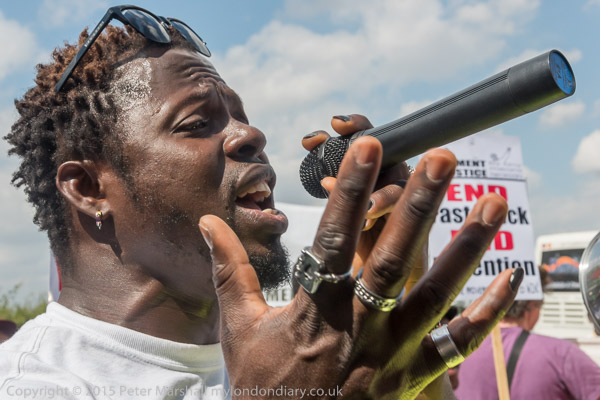
The protest started there and it was a good time to take pictures as everyone was on a fairly small area of grass in front of the fence around the estate. Later people were more spread out. It’s often the case that the best time to take photographs is in the few minutes before an event actually starts as people are getting ready and in the first few mintues, and photographers often miss out by standing around talking with colleagues rather than getting down to work.
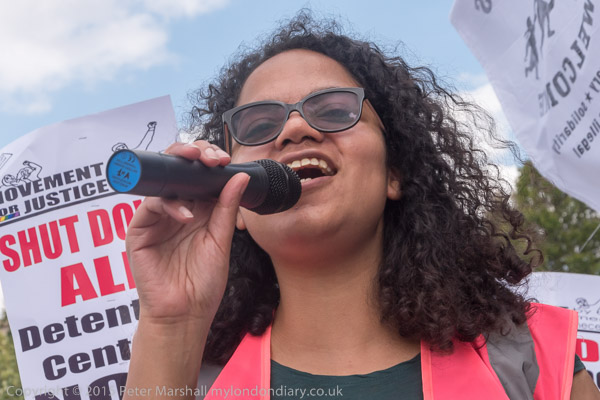
It’s easier too when you know many of those taking part – or perhaps when they know you and trust you, and having photographed at many Movement for Justice protests both at Harmondsworth and in central London made it easier for me.
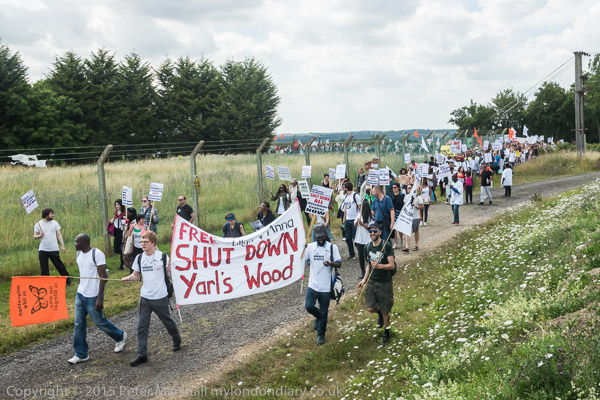
When all the expected coaches had arrived, the protesters – now approaching a thousand – set off to march to the detention centre, around half a mile distant, at first along the road and then on a public bridleway which goes around the boundary of the centre (and then around the actual wood, which I’ve still not visited.) I tried hard to find a way to show the size of the protest , but there was never a position where both ends of the march were visible.
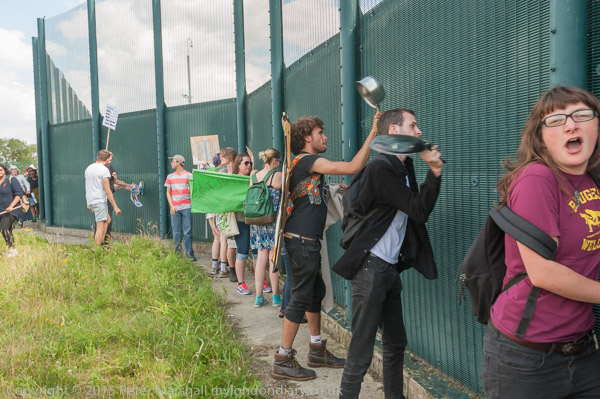
At the previous MfJ protest here a few months earlier which I’d missed, police had attempted to stop the protesters reaching the field beside the prison, but had failed with a length of fencing being pushed down. This time they had agreed to let the protest through and there were relatively few police on duty and we walked unhindered through the gate and up to the tall and substantial fence around the whole site. We could hear they shouts of welcome from the women inside the prison, and they could certainly hear people shouting back to them and making a huge noise beating and kicking the fence.
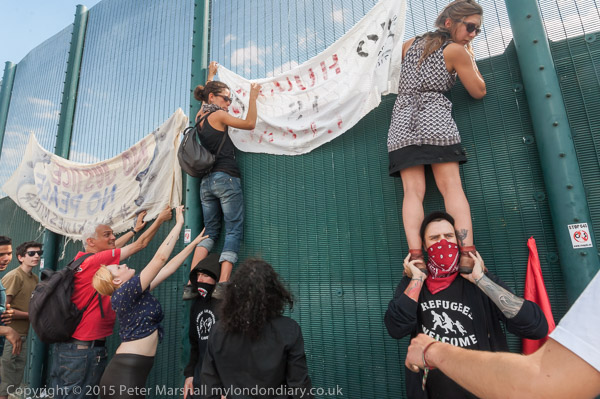
People climbed up on the shoulders of others to show banners and wave flags so that the women inside could see them, and then a group of protesters in masks began to spray paint slogans along the fence.
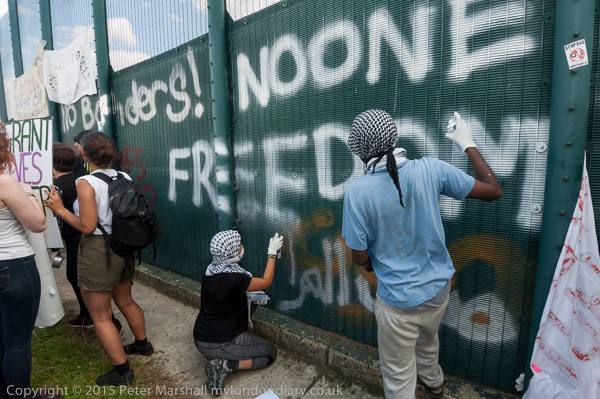
It’s always a slightly difficult situation when photographing protests like this where there is a possibility – though perhaps small – that people could be arrested and face charges and your pictures could be used as evidence. But people were masked and so less readily identifiable, and I mainly photographed from behind.
The field slopes up away from the fence, and from some distance back it was possible to see some of the women at the upper floor windows. These have only a very restricted opening, to stop escape or more likely suicide attempts, but the women were able to hold out posters and wave towels and articles of clothing. Others held up notices to the glass so we could read them.
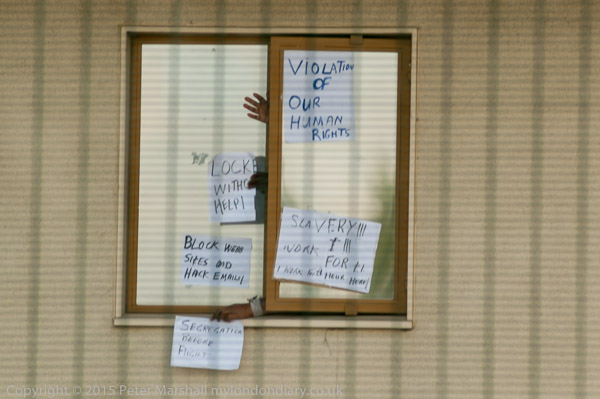
Photographically there were problems. First was the distance, and even with my 70-300mm lens at its most extreme the windows were a little small in the frame. The image above is typical, cropped from 12Mp to 4Mp. I think I should have taken it with a wider aperture which might have made the grid of the fence through which I had to work less evident, but I didn’t think to do so at the time.
But it was extremely difficult to focus – many of the frames I took were out of focus – and the smaller aperture would have helped here. Autofocus was pretty useless unless I wanted sharp pictures of the fence and I soon resorted to manual focus. Although the windows were some distance away they were not sharp with the lens at infinity, and working with the 70.0-300.0 mm f/4.0-5.6 with manual focus is not too easy. Old-fashioned long lenses which were made for manual focus along with focussing screens of the day were much easier than with lenses and cameras made for autofocus.
There must also have been a good reason at the time to work with this lens on the D700 rather than the newly acquired Nikon D810, though I can’t now think what it could have been. The 18-105mm stayed on the D810 all day, while on the D700 I made use of the 16-35mm, 16mm fisheye and the 70-300m. On the 810 I could have worked in DX mode, making the 300mm into an effective 450mm and still have had 15Mp to play around with.
But the biggest mistake I made that day wasn’t photographic but was to forget to pack my sandwiches. By around 2.30pm I was feeling hungry and reached into the back of my bag where they should have been to find nothing there. It was around 5.30pm that I managed to buy a snack at Bedford station raise my blood sugar and keep me going while rushing to catch a train.
Continue reading Yarl’s Wood
